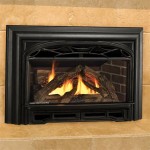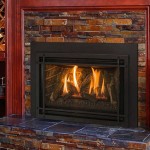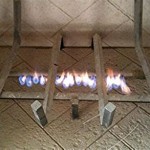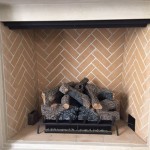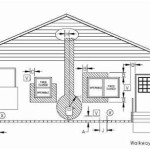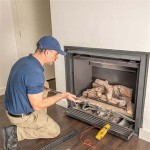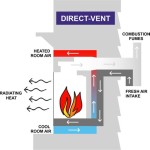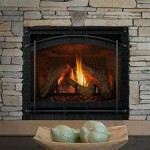Outdoor Stacked Stone Fireplace Cost: Factors and Considerations
An outdoor stacked stone fireplace can transform a backyard into an inviting and aesthetically pleasing entertainment space. The natural look and feel of stacked stone adds a touch of rustic elegance, while the warmth of a fire extends the usability of outdoor areas into cooler months. However, before embarking on such a project, understanding the various cost factors involved is crucial for effective budgeting and planning. The overall expense of constructing an outdoor stacked stone fireplace is influenced by several variables, including the type of stone, the size and complexity of the design, the labor involved, and any additional features desired.
This article will delve into the intricate details of outdoor stacked stone fireplace costs, examining the individual components that contribute to the final price. It will explore the different types of stacked stone available, their respective price points, and the associated labor costs. Furthermore, it will discuss the impact of design complexity, permits, and additional features like gas lines or built-in seating on the overall budget. By understanding these elements, homeowners can make informed decisions and effectively manage the financial aspects of their outdoor fireplace construction project.
Stone Type and Material Costs
The type of stacked stone chosen significantly influences the overall cost of the fireplace. Natural stone, known for its durability and unique aesthetic, generally carries a higher price tag compared to manufactured stone veneer. Within natural stone, variations in the type of stone – such as granite, limestone, slate, or fieldstone – further affect the cost based on availability, quarrying difficulty, and transportation expenses.
Natural stone offers a raw, organic beauty that many homeowners find appealing. Each piece is unique, with variations in color, texture, and size, creating a visually interesting and authentic look. However, this authenticity comes with potential drawbacks. Natural stone requires more extensive preparation and installation, as it often needs to be cut and shaped to fit properly. This adds to the labor cost. The weight of natural stone also necessitates a stronger foundation, which can further increase expenses.
Manufactured stone veneer, also known as faux stone, is a concrete-based product designed to replicate the look of natural stone. It is generally less expensive than natural stone and offers several advantages. Manufactured stone is lighter, easier to install, and comes in consistent shapes and sizes, which can reduce labor costs. It is also available in a wide range of colors and styles, allowing homeowners to achieve a specific aesthetic. However, manufactured stone lacks the unique character and authenticity of natural stone. While it can be aesthetically pleasing, it typically does not have the same longevity as natural stone and may require more maintenance over time to prevent fading or damage.
The cost of natural stone can range from $15 to $50 per square foot, depending on the type and quality. Manufactured stone veneer typically costs between $5 to $15 per square foot. These figures represent the material cost only and do not include installation.
Labor and Installation Costs
Labor costs constitute a significant portion of the overall outdoor stacked stone fireplace cost. The complexity of the installation process, the experience of the contractor, and the geographic location all influence the labor rates. Installing stacked stone requires skilled masons with experience in working with stone and ensuring proper structural integrity. The process involves preparing the foundation, applying mortar, carefully placing each stone, and grouting the joints.
Experienced contractors often charge higher rates due to their expertise and ability to complete the project efficiently and effectively. It is advisable to obtain multiple quotes from different contractors to compare prices and ensure that the chosen contractor is licensed and insured. Checking references and reviewing past projects can provide valuable insights into the contractor's quality of work.
The preparation of the foundation is a critical step in the installation process. A solid and level foundation is essential to prevent the fireplace from shifting or settling over time. The foundation is typically made of concrete and must be properly reinforced to support the weight of the stone. If the existing surface is not suitable, additional excavation and pouring of concrete may be required, adding to the overall cost. The height of the fireplace will also determine the foundation's size and reinforcement requirements.
The installation process itself can be time-consuming, especially when working with natural stone that requires cutting and shaping. Contractors may charge by the hour or by the square foot. Hourly rates for masons typically range from $50 to $100 per hour. Square foot rates can vary from $15 to $40 per square foot, depending on the complexity of the design and the type of stone being used. Therefore, a fireplace with a larger surface area and intricate design will naturally incur higher labor costs.
Furthermore, the location of the fireplace can impact labor costs. If the fireplace is located in a difficult-to-access area, such as on a sloped terrain or in a backyard with limited access, the contractor may charge more to account for the additional effort and time required to transport materials and equipment to the site.
Design Complexity, Permits, and Additional Features
The design of the outdoor stacked stone fireplace significantly impacts the overall cost. A simple, straightforward design will generally be less expensive than a complex design with intricate details. Features such as arches, curves, and multiple tiers require more skilled labor and more time to construct.
Before commencing construction, it is essential to obtain the necessary permits from the local authorities. Permit requirements vary depending on the location and the size of the fireplace. Failing to obtain the required permits can result in fines and delays. The cost of permits can range from a few hundred dollars to over a thousand dollars, depending on the jurisdiction. It is advisable to contact the local building department to determine the specific permit requirements in your area.
Adding additional features to the outdoor fireplace can enhance its functionality and aesthetic appeal, but it will also increase the overall cost. Popular features include built-in seating, storage for firewood, and gas lines for easy ignition. Built-in seating can provide comfortable seating around the fireplace and create a more inviting gathering space. Adding storage for firewood can keep the area tidy and organized. Running a gas line to the fireplace allows for easy ignition and eliminates the need to constantly replenish firewood. Gas line installation must be performed by a licensed plumber and can cost several hundred to several thousand dollars, depending on the distance from the gas source.
Another popular addition is installing a chimney cap or spark arrestor. This feature helps prevent sparks and embers from escaping the chimney, reducing the risk of fire. A chimney cap can also protect the chimney from rain and debris, extending its lifespan. The cost of a chimney cap or spark arrestor typically ranges from $100 to $500, depending on the size and material.
Landscaping around the fireplace can further enhance its aesthetic appeal. Adding plants, shrubs, and trees can create a more natural and inviting environment. However, landscaping can also add to the overall cost of the project. The cost of landscaping depends on the size of the area and the types of plants chosen.
The inclusion of electric outlets near the fireplace is also a common consideration. These outlets can be utilized for lighting, sound systems, or other electronic devices. The cost of installing electrical outlets depends on the distance from the main electrical panel and the complexity of the wiring. It's critical to involve a certified electrician to ensure safety and compliance with local codes.
In summary, the final price tag of an outdoor stacked stone fireplace is a confluence of various factors from the material selection to optional additional features. Careful consideration of these factors is essential to ensure the project stays within budget and delivers the desired aesthetic and functional benefits.

How Much Does An Outdoor Fireplace Cost In 2024 Angi

Outdoor Fireplace Burntech Vista Oceanside Carlsbad Escondido Encinitas San Diego Area

Belgard Bordeaux Series Outdoor Kitchens And Fireplaces Unique Supply

Natural Stacked Stone Veneer Fireplace Ideas

Diy Outdoor Fireplace Kit Fremont Makes Hardscaping And Easy

How Much Does An Outdoor Fireplace Cost In 2024 Angi

Custom Decks Outdoor Fireplace Costs

How Much Does It Cost To Build A Diy Outdoor Fireplace

Cultured Stone Outdoor Fireplace Brick Fireplaces

Outdoor Stone Fireplace Landscaping Network
Related Posts

